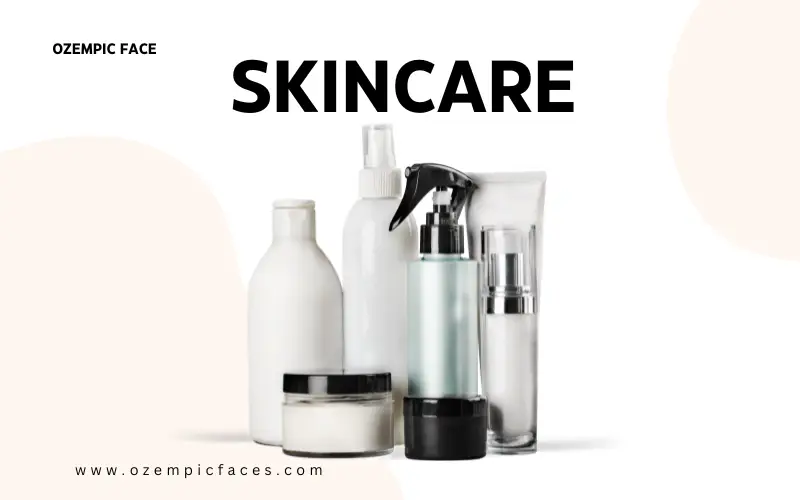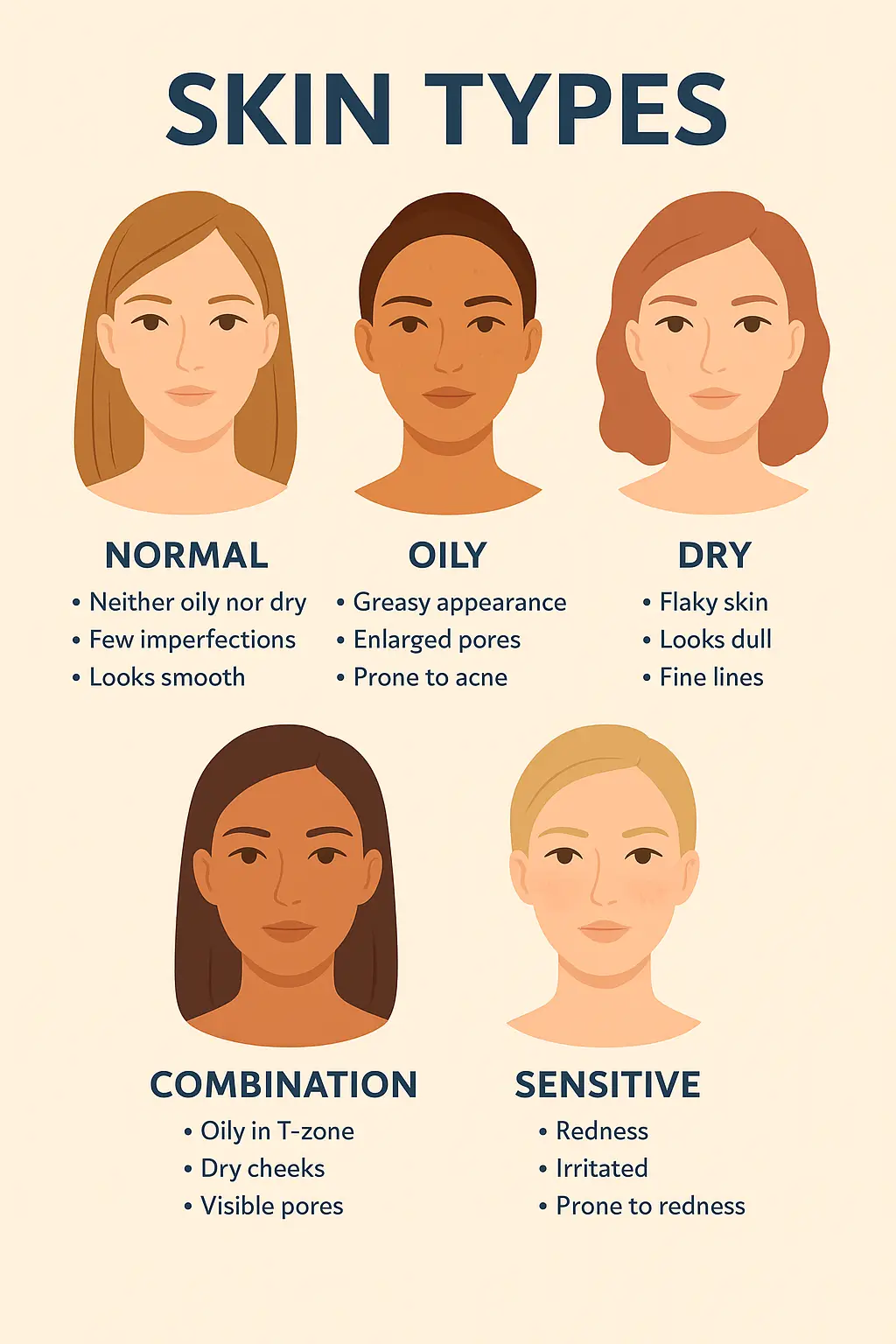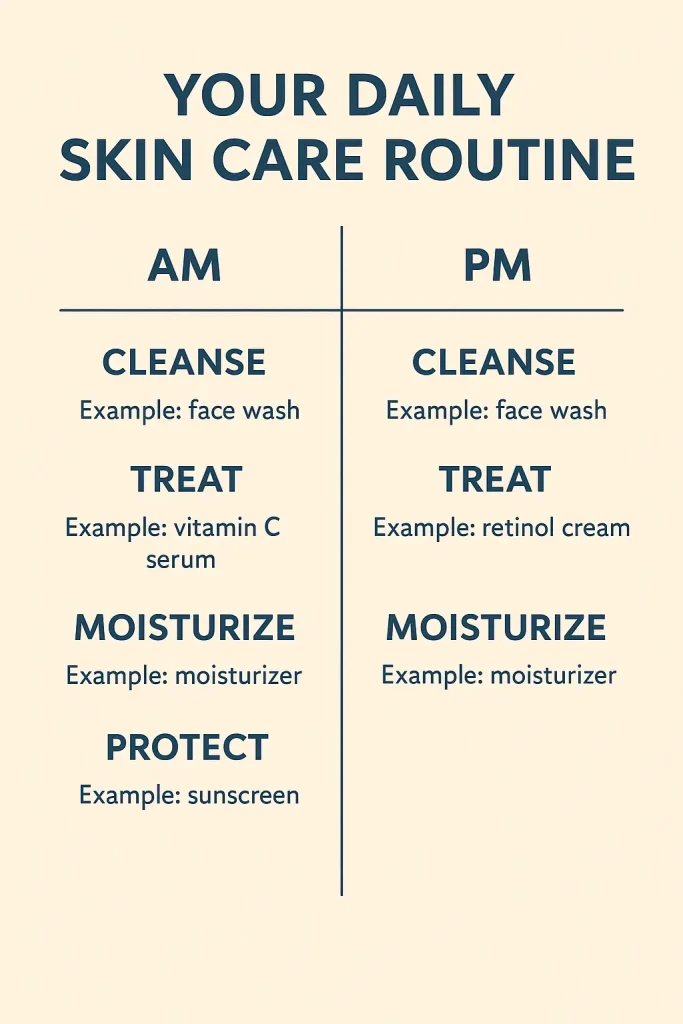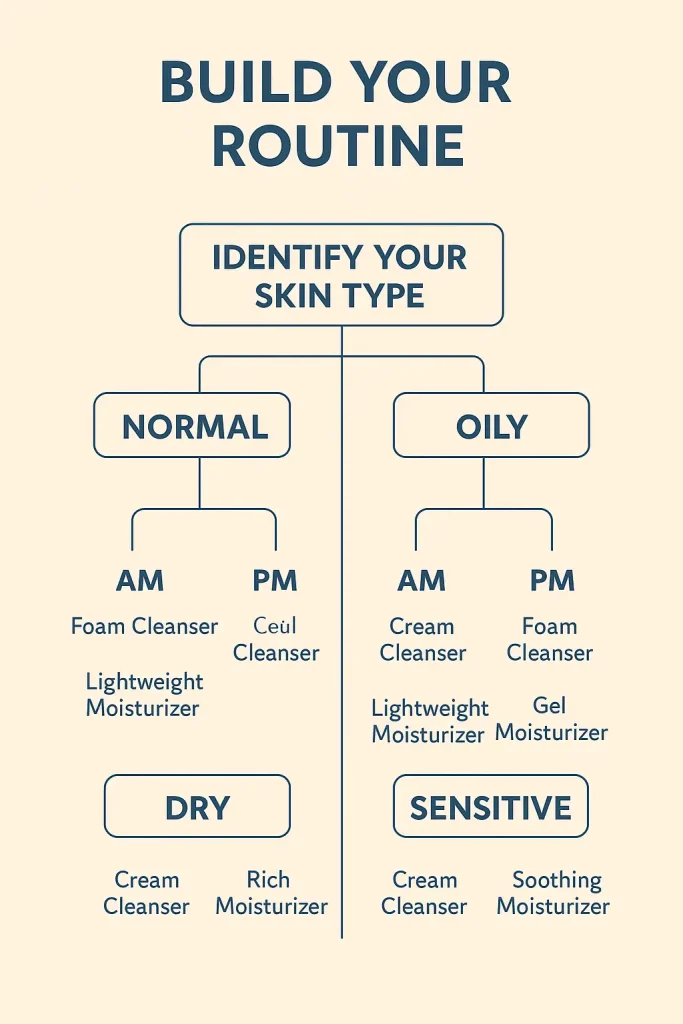The Ultimate Guide to Skin Care: Unlock Your Healthiest Glow

Your skin is more than just a surface, it’s your body’s largest organ and a vital protective barrier. Proper skin care is not about vanity, it’s an essential component of your overall health and wellness. Whether you’re a complete beginner or looking to refine your existing habits, understanding the fundamentals of skin health can transform your complexion and boost your confidence.
This comprehensive guide will walk you through everything you need to know. We will cover the foundational steps of a daily routine, explore how to choose products for your specific skin type, and discuss advanced treatments that can address persistent concerns. We’ll also look at the powerful connection between lifestyle and your skin’s appearance. By the end, you will have a clear roadmap to achieving radiant, healthy skin.
Understanding Your Skin: The First Step in Effective Skin Care
Before you can build an effective skin care regimen, you need to understand your unique skin type. Using the wrong products can lead to irritation, breakouts, or dryness, undermining your efforts. Skin types are generally categorized into five main groups.

What do you think your skin type is? Let’s find out.
1. Normal Skin:
If your skin feels balanced, not too oily and not too dry, you likely have a normal skin type. It typically has few imperfections, minimal sensitivity, and barely visible pores. The goal for this type is maintenance and prevention.
2. Oily Skin:
Characterized by a persistent shine, enlarged pores, and a tendency for blackheads and acne. Oily skin is the result of excess sebum production. The right skin care routine can help manage oil without stripping the skin of its natural moisture.
3. Dry Skin:
Dry skin often feels tight, rough, or even flaky. It can look dull due to a lack of natural oils and may be more prone to showing fine lines. Hydration and moisturization are the cornerstones of caring for dry skin.
4. Combination Skin:
This is the most common skin type, featuring a mix of oily and dry areas. Typically, the T-zone (forehead, nose, and chin) is oily, while the cheeks are normal or dry. A targeted approach is needed to balance these different zones.
5. Sensitive Skin:
Sensitive skin reacts easily to products, environmental factors, and even stress. Symptoms include redness, itching, burning, and dryness. Caring for sensitive skin requires gentle, fragrance free products and a simple, consistent routine.
The Core Four: Building Your Daily Skin Care Routine
A successful skin care routine doesn’t need to be complicated. Consistency is far more important than the number of products you use. Four fundamental steps form the foundation of any good regimen for promoting overall skin health: Cleanse, Treat, Moisturize, and Protect.
1. Cleanse: The Foundation of Healthy Skin
Cleansing removes dirt, oil, makeup, and pollutants that accumulate on your skin throughout the day. This step is crucial for preventing clogged pores and preparing your skin to absorb the products that follow.
- When to Cleanse: Cleanse your face twice daily, once in the morning and once at night. A morning cleanse removes sweat and oils from the night, while an evening cleanse washes away the day’s grime.
Choosing a Cleanser:
- Oily/Acne-Prone Skin: Look for foaming liquids or gel cleansers, possibly with ingredients like salicylic acid.
- Dry/Sensitive Skin: Opt for cream, lotion, or oil-based cleansers that are hydrating and fragrance free.
- Normal/Combination Skin: A gentle foaming or gel cleanser usually works well.
Pro Tip: Avoid using hot water, which can strip your skin’s natural oils. Use lukewarm water instead.
2. Treat: Targeting Specific Concerns
This is the step where you address specific skin concerns like acne, fine lines, hyperpigmentation, or dullness. Treatment products, such as serums, are highly concentrated and designed to deliver potent active ingredients directly to the skin.
- Common Active Ingredients and Their Uses:
- Vitamin C: An antioxidant that brightens the skin, protects against environmental damage, and helps fade dark spots. Best used in the morning.
- Retinoids (Retinol, Tretinoin): The gold standard for anti-aging. They accelerate cell turnover, boost collagen production, and unclog pores. Best used at night, as they can cause sun sensitivity.
- Hyaluronic Acid: A powerful humectant that draws moisture into the skin, making it look plump and hydrated. Suitable for all skin types.
- Niacinamide (Vitamin B3): A versatile ingredient that can help with redness, pore size, oil production, and barrier function.
- Salicylic Acid (BHA): An exfoliant that penetrates oil to clean out pores, making it excellent for acne.
- Glycolic Acid (AHA): An exfoliant that works on the skin’s surface to improve texture, fade dark spots, and reduce fine lines.
Real-Life Example: Sarah, 32, struggled with adult acne and post-inflammatory hyperpigmentation (dark spots left by pimples). She incorporated a salicylic acid serum into her routine three nights a week and a Vitamin C serum every morning. Within three months, her breakouts were significantly reduced, and her complexion appeared brighter and more even. This targeted treatment was a game changer for her skin care journey.
3. Moisturize: Hydrate and Repair
Moisturizing is non-negotiable for every skin type, even oily skin. A good moisturizer hydrates the skin, locks in the benefits of your treatment products, and supports your skin’s natural protective barrier. A compromised barrier can lead to dryness, irritation, and sensitivity.
Choosing a Moisturizer:
- Oily Skin: Lightweight, oil-free lotions or gels are ideal.
- Dry Skin: Thicker creams or ointments with ingredients like ceramides, shea butter, or hyaluronic acid provide intense hydration.
- Combination Skin: You might use a lightweight lotion all over or apply a richer cream to dry areas. Sensitive Skin: Look for simple, hypoallergenic, and fragrance free formulas.
Proper moisturizing is a key pillar of any effective skin care plan to maintain skin health.
4. Protect: The Ultimate Anti-Aging Secret
If you only do one thing for your skin, let it be wearing sunscreen. Sun protection is the most critical step in any skin care routine. UV radiation is the primary cause of premature aging, including wrinkles, fine lines, and sunspots, and, most importantly, skin cancer.
Sunscreen Essentials:
- Broad-Spectrum: Protects against both UVA (aging) and UVB (burning) rays.
- SPF 30 or Higher: This is the minimum recommendation from dermatologists for daily use.
- Apply Generously and Reapply: Use about a nickel-sized dollop for your face and reapply every two hours, or more often if you’re swimming or sweating.

Sunscreen isn’t just for sunny days or the beach. UV rays penetrate clouds and windows, so daily application is essential for long term skin health.
Advanced Skin Care: Elevating Your Routine
Once you have mastered the core four, consider adding advanced steps or treatments to address more specific goals. These additions can enhance your routine and provide more dramatic results.
Exfoliation: Unveiling Brighter Skin
Exfoliation removes dead skin cells from the surface, revealing the fresher, brighter skin underneath. It can improve skin texture, prevent clogged pores, and help your other products penetrate more effectively. There are two main types of exfoliation.
- Physical Exfoliation: Uses a tool (like a brush or sponge) or a scrub with small particles to slough off dead skin manually. Be gentle to avoid creating micro-tears in the skin.
- Chemical Exfoliation: Uses acids, like Alpha Hydroxy Acids (AHAs) and Beta Hydroxy Acids (BHAs), to dissolve the bonds holding dead skin cells together. This is often gentler and more effective than physical scrubs.
- AHAs (e.g., glycolic acid, lactic acid): Water-soluble, best for surface-level concerns like dullness and fine lines.
- BHAs (e.g., salicylic acid): Oil-soluble, ideal for penetrating pores to treat acne and blackheads.
How often should you exfoliate? Start with once or twice a week and see how your skin responds. Over-exfoliation can damage your skin barrier, leading to redness and irritation.
Masks and Specialized Treatments
Face masks can provide a concentrated dose of ingredients for a quick boost. Whether you’re looking for deep hydration, detoxification, or a calming effect, there’s a mask for you.
- Clay Masks: Great for absorbing excess oil and impurities.
- Sheet Masks: Soaked in serum, these are excellent for a quick hydration and radiance boost.
- Overnight Masks (Sleeping Packs): Designed to work while you sleep, delivering intense moisture and repair.
This element of skin care can feel like a luxurious self-care ritual.
Professional Dermatology Treatments
For persistent issues or more significant anti-aging goals, professional treatments offered by a dermatologist or licensed esthetician can provide results that at home skin care can not achieve.
- Chemical Peels: A stronger, in-office version of chemical exfoliation that can dramatically improve texture, pigmentation, and acne.
- Microneedling: Creates tiny, controlled injuries in the skin to stimulate collagen and elastin production, improving scars, wrinkles, and texture.
- Laser Therapy: Can target a wide range of concerns, from redness and broken capillaries to unwanted hair and deep wrinkles.
- Injectables: Botox and dermal fillers can smooth wrinkles and restore lost volume.
Consulting with a dermatology professional is the best way to determine if these treatments are right for you and to ensure they are performed safely.
The Lifestyle Connection: Skin Care from the Inside Out
Topical products are only part of the equation. Your daily habits have a profound impact on your skin health. A holistic approach to skin care considers what you put into your body and how you live your life.
1. Diet and Hydration
A balanced diet rich in antioxidants can protect your skin from damage. What you eat truly shows on your face.
Foods for Healthy Skin:
- Fatty Fish (Salmon, Mackerel): Rich in omega-3 fatty acids, which reduce inflammation and keep skin supple.
- Avocados: High in healthy fats and Vitamin E, an important antioxidant.
- Berries and Leafy Greens: Packed with antioxidants that fight free radicals.
- Nuts and Seeds: Provide Vitamin E, selenium, and zinc.
- Hydration: Drinking plenty of water is essential for keeping your skin hydrated from within. Dehydration can make your skin look dull and emphasize fine lines.
Case Study: Mark, 45, was frustrated with his dull and tired-looking skin. On the advice of his dermatologist, he cut back on processed foods and sugar and increased his intake of fruits, vegetables, and water. He also made sure to get enough sleep. After two months, his colleagues started commenting on how much healthier and more vibrant his skin looked. This illustrates the power of lifestyle changes in any skin care plan.
2. Sleep
They don’t call it “beauty sleep” for nothing. During sleep, your body goes into repair mode. Your skin rebuilds collagen, repairs damage from UV exposure, and reduces inflammation. Aim for 7-9 hours of quality sleep per night. Lack of sleep can lead to dark circles, puffiness, and a lackluster complexion.
3. Stress Management
Chronic stress can wreak havoc on your skin. It triggers the release of cortisol, a hormone that can increase oil production (leading to acne) and break down collagen. Finding healthy ways to manage stress, such as exercise, meditation, yoga, or spending time in nature, is a crucial part of holistic skin care. Have you ever noticed a breakout right before a big event? That’s often stress at work.
4. Avoiding Bad Habits
- Smoking: Accelerates aging by breaking down collagen and elastin, leading to premature wrinkles and a sallow complexion.
- Excessive Alcohol: Dehydrates the skin and can cause inflammation and redness.
- Touching Your Face: Transfers dirt, oil, and bacteria from your hands to your face, which can cause breakouts.
By adopting these healthy habits, you support your skin’s natural ability to repair and regenerate itself, amplifying the effects of your topical skin care routine.
Building Your Personalized Skin Care Regimen
Now that you have all the information, it’s time to put it all together. Remember that the best skin care routine is the one you will actually stick with.
Sample Routines by Skin Type:
- Oily Skin:
- AM: Gel Cleanser -> Vitamin C Serum -> Lightweight, Oil-Free Moisturizer -> SPF 50.
- PM: Gel Cleanser -> Salicylic Acid Toner (2-3x/week) -> Niacinamide Serum -> Gel Moisturizer.
- Dry Skin:
- AM: Cream Cleanser -> Hyaluronic Acid Serum -> Rich Cream Moisturizer -> SPF 30+.
- PM: Cleansing Balm/Oil -> Hydrating Toner -> Retinol Serum (start 2x/week) -> Rich Night Cream.
- Sensitive Skin:
- AM: Micellar Water Rinse -> Soothing Serum -> Simple, Fragrance-Free Moisturizer -> Mineral Sunscreen (SPF 30+).
- PM: Gentle Cream Cleanser -> Niacinamide Serum -> Simple Moisturizer.

Skin Care and Ozempic Face: A Guide to Healthy Skin
Medications like Ozempic, initially developed for type 2 diabetes, are now widely used for weight management. This has led to many success stories, but also an unexpected side effect some have named “Ozempic Face.” This term describes the facial changes, such as sagging skin and a hollowed appearance, that can result from rapid weight loss. While losing weight is a positive health achievement, it’s natural to want your face to reflect that vitality.
This guide will explain what Ozempic Face is, why it happens, and what you can do about it. We will cover everything from preventative skin care to effective treatments that help restore your skin’s firmness and youthful appearance.
What Exactly Is “Ozempic Face”?
” Ozempic Face” isn’t a medical diagnosis but a term coined to describe the aesthetic effects of rapid weight loss on the face. When you lose a significant amount of body fat quickly, the fat pads in your face, which provide volume and support, also shrink. This can lead to a more aged or gaunt appearance.
The key features associated with this phenomenon include:
- Loss of Volume: Cheeks and temples may appear sunken or hollow.
- Sagging Skin: Without the underlying fat for support, skin can lose its firmness and start to droop, particularly around the jawline (jowls) and neck.
- Increased Wrinkles: Fine lines and deeper folds, like marionette lines and nasolabial folds, can become more pronounced.
- A “Tired” Look: The combination of volume loss and sagging can make you look more tired than you feel.
It’s important to understand that these changes are not caused directly by the medication itself. Rather, they are a consequence of the rapid weight loss it facilitates. Any method that causes fast weight reduction can have a similar effect on your facial appearance.
Conclusion: Your Journey to Healthy Skin
Effective skin care is a journey of discovery and consistency. It begins with understanding your unique skin type and committing to a foundational routine of cleansing, treating, moisturizing, and protecting. From there, you can incorporate advanced treatments and make supportive lifestyle choices to enhance your results.
Remember that progress, not perfection, is the goal. Your skin’s needs may change with the seasons, your age, and even your stress levels. Learning to listen to your skin and adjust your routine accordingly is the ultimate skill. By investing in a thoughtful skin care regimen, you are not just improving your appearance; you are investing in your long-term health and well-being. Start today, stay consistent, and enjoy the confidence that comes with healthy, glowing skin.
